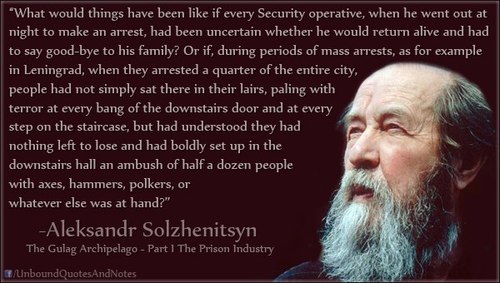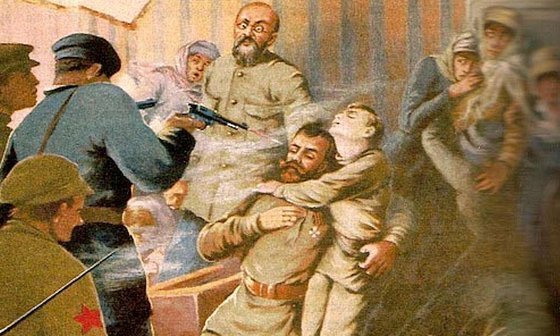October 4, 2020




October 4, 2020




It was October of 1859 when the fateful event of John Brown’s raid of Harpers Ferry took place, turning a politically tense nation into one of mutual distrust, fear, and misunderstanding. The attack on federal property with the intention to create an armed, violent insurrection alarmed the nation.
Since its founding, the country had often engaged in heated, intense, and even personal political feuds. Citizens need only think of the battles between John Adams and Thomas Jefferson, or that of Andrew Jackson and central banker Nicholas Biddle, for reminders of how pressurized these contests of wills and intellects could be. However, at the end of the day, despite who “won or lost,” Americans viewed it as a natural, healthy part of the political discourse and an organic process of national growth.
Brown’s raid, however, was far from that — it was an avocation of violence, of blood, and an assault on the peaceful institutions of their Founders they so revered. A tumultuous election followed by a bloody civil war ensued, hundreds of thousands of lives were lost, cities were razed to the ground, and citizens of all regions of the country were faced with the question of whether such catastrophe could have been avoided. Regardless, post-1865 America was reunified, the ancient evil of slavery had been rectified, and Americans could be American — not Unionist or Confederates — once again. This reunification lasted for nearly a century and a half — until the country seemed to witness another outbreak of John Brown–style rage across its cities beginning in the summer of 2020.
In his gripping biography of legendary Virginian general Thomas “Stonewall” Jackson, author S.C. Gwynne ponders how Jackson, a West Point graduate, a noted veteran of the Mexican-American War, a deeply devout Christian man who opposed secession and war, and a man who personally provided time and resources to help educate blacks in his community, came to become one of the Civil War’s most accomplished Confederate commanders. His conclusion may be surprising: he posits that it was the North’s reaction to John Brown’s bloody raid on Harpers Ferry that ultimately determined the divided nation’s fate. Virginians believed that the North’s “presses, pulpits, public meetings and conversations, disclosed such a hatred of the South and its institutions as to lead them to justify the crime” and that it was “wealthy Northern benefactors who had helped Brown finance his enterprise” (Gwynne, p.26). The result, Gwynne argues, was that Virginians felt that, more than anything, they had to repel hostile, violent invaders from their lands; it was, they believed, the North’s “maligned intent” that drove them to war (31). For the average man, it was not politics that motivated him to fight, but fear of unchecked civil unrest and violence spreading to his towns and cities. These people feared, at the root, the destruction of principles that they believed the country was founded upon. For the average man today, the recent events in cities Portland, Seattle, and numerous other places may not seem so different from what the 19th-century man saw in Harper’s Ferry.
In a recent speech at Hillsdale College, prominent historian Victor Davis Hansen made the case that the “2020 election is about civilization vs. anarchy.” It’s no accident that he discusses heavily how media, academic, and political institutions have sided with, funded, or simply attempted to justify the looting, violence, and the suppression of competing ideas is effecting not just the election, but the culture. The goal, he states, is to transform “the structure of America so that it can’t revert back to America.” He clarifies the statement by predicting that should the radical left take control of the presidency and Senate, the abolishment of the Electoral College, the packing of the Supreme Court, removal of the filibuster in the Senate, and perhaps even altering senators to be redistributed via population instead of two per state would soon follow.
Unlike previous political epochs in the last half-century or longer, this one is effectively driven by raw, unabashed ideology. When an individual, or a well funded group, becomes so possessed with his ideology that he believes that their pursuit of power with the subsequent use of that power justifies any action they are taking, they create the situations that, if not checked, lead to political upheaval, civil violence, and destruction.
The situation seems strikingly similar today; most Americans actively want to live among each other peacefully and prosperously and be able to work out their differences in a politically non-destructive, non-venomous manner. Yet divisiveness has reached a fever pitch, and continuing violence looms over the nation. The crux of the issue, both for the observers of Harpers Ferry and for the modern rioting, therefore centers on two central concepts: fear of being hurt, punished, or ostracized for political philosophy and, secondly, the inability to adequately articulate one’s political and moral philosophy to combat the possessed ideologues’ hostile approach due to incomplete education. Both can be remedied.
Philosopher Edmund Burke famously opined that “the only thing necessary for evil to triumph is for good men to do nothing.” Truly being effective in overcoming the aforementioned fears faced by the American citizenry has to begin with learning about virtues — from Marcus Aurelius and the Romans from Benjamin Franklin and Washington, from ethical philosophers ranging from Aristotle to Ayn Rand. Only from the foundation of ethics can we properly teach our people about its history and the political systems that logically derive from the code of ethics a people holds. If men are properly trained in virtues and ethics, they cannot so easily be deceived by events like Harpers Ferry or the 2020 urban destruction. On the contrary, they will be able to utilize their education of ethics, history, and politics to prevent the fear of violence and ostracism and will be able to articulate a defense of virtuous living within the framework that the Founders devised, all the while being able to acknowledge its faults and limitations.
If one is to battle the ideologically possessed, then he cannot cede them any ground in the arena of virtue. In Gibbon’s epic Decline and Fall of the Roman Empire, he warns that the end of the empire was marked by “minds corrupted by education, luxury, and despotic power” that depended on one or two virtuous people for their survival, oblivious to their internal and external dangers, and mostly notably ignorant of the virtuous nobility of their ancestors (Gibbon, p. 527). For the Romans, the result was corruption and decay, with inevitable subjugation and humiliation. To avoid such an end, the United States would be wise to avoid losing touch with its virtuous roots.
References
Gibbon, Edward. Decline and Fall of the Roman Empire. Edited by D.M Low. 1960
Gwynne, S.C. Rebel Yell: The Violence, Passion, and Redemption of Stonewall Jackson. Simon & Schuster, Inc. 2014.
Hansen, Victor David. “Plague, Panic, and Protest — The Weird Election of 2020.” Hillsdale College. Sept 3, 2020. https://www.youtube.com/watch?v=k6L5C0uLFjE
The violence and rioting in the US result from far more than just dissatisfaction with the police. Extreme ideological social justice movements today are more likely to carry firearms than items for a food pantry. We currently face nothing less than the early stages of a socialist insurgency.
Insurgency is an organized rebellion to overthrow a constituted government by undermining its legitimacy through protest and disinformation, and ultimately through armed conflict. This may sound dramatic, but consider the steps already completed by BLM/ANTIFA in the Insurgency Pyramid used by the US Army Special Forces community to characterize an insurrection (Figure 1).
Initially, when the insurgents are still weak, they organize around a group that is actively dissatisfied with political and social conditions and desires ideological or other changes. In America, who better to target than the poorest and least educated black Americans, for they already believe they have a legitimate grievance?
Insurgents use propaganda and political efforts to exploit this atmosphere, creating more significant discontent that discredits the government. BLM and ANTIFA have made it abundantly clear that they believe the existing government and socio-economic system are unjust and exclude them.
It’s well known that leftists intimidate people, so they refrain from presenting counter-factual arguments. Then, by spinning the narrative for high-profile events, they build credibility and feed the general sense of public dissatisfaction.
Leftists are adept at vilifying anyone who defends the current system, even if they acknowledge its flaws and signal a willingness to improve it. After all, who wouldn’t support racial justice? Nonetheless, if you are not absolutely for the cause as presented, leftists will accuse you of being absolutely against it. Hence, saying “All Lives Matter” is synonymous with “I’m a racist.”
The insurgents foment distrust for public institutions, which leads to more favorable public opinion for the insurgency. We’ve seen that BLM’s and Antifa’s preferred targets are the police and the judicial system, which are the very foundations of law and order.
At the same time that they garner popular support for the movement and vilify its opponents, the insurgents also work to infiltrate public institutions and spread their narrative into all sectors of society. Celebrities, government officials, universities, corporations, and others have bought into the BLM narrative, either through intellectual laziness or for personal gain. This results in broad popular support through funding, quasi-intellectual backing, active protest and rioting, and even sympathetic inaction.
Hawk Newsome, the chairman of BLM’s New York chapter, claims BLM is following in the Black Panther Party’s footsteps and adds that former “Special Forces officers” train the movement to protect itself — presumably from the police. Armed members have attempted to replace police officers in abandoned areas of Seattle and Atlanta. Justifying and introducing armed insurgent personnel is a key step toward more militant acts. One example, from June 26, is the pre-planned ambush against two police officers in Tampa who were called to a phony shooting, only to have glass-bottle throwing rioters attack them.
Having foreign countries legitimize and support the insurgency is also critical. BLM protests erupted worldwide after George Floyd was killed, and Antifa has fraternal organizations across Europe. It’s still unclear what America’s die-hard international enemies are doing to support BLM and Antifa. Still, if they aren’t acting yet, they are most certainly looking for their opportunities.

Insurgency Pyramid. Actions already completed or begun by BLM/ANTIFA are in color. These actions do not have to take place in the order they are listed. Graphic by Matt Rowe.
The three co-founders of BLM — Patrisse Khan Cullors, Alicia Garza, and Opal Tometi — all have Marxist Socialism at the core of their ideologies. According to the Capital Research Center, the three women worked for the Freedom Road Socialist Organization’s front groups. The FRSO is one of the country’s largest radical-left organizations. Tometi actively promotes Socialism and anti-western socio-economics, while Cullors has publicly stated that the leaders of BLM are “trained Marxists.”
Antifa nominally believes that the country is heading toward Fascism and touts President Trump’s election and “America First” platform as proof. The organization has existed since the 1980s, but its radical anti-globalism and anti-capitalist rhetoric was inconsequential. By taking on BLM’s “anti-racist” cause, Antifa significantly increased its opportunities to act. Antifa has not hidden its Marxist Socialist objectives, but it has modified the traditional conflict from “workers versus the owners of capital” to “identity conflicts” based upon race, gender, sexual orientation, etc.
The vast majority of BLM members and supporters make up what Vladimir Lenin called “the useful idiots.” That is, the people actively working for a cause without really understanding the cause’s objectives. They are cynically being used to achieve an end they may have never intended. The core organizers’ goal is to keep the useful idiots blind to the truth for as long as possible while indoctrinating them into the cause.
To defeat this insurgency, we must eliminate the dissatisfaction that drives the largest groups of actors. We cannot change the political beliefs of hardcore Marxists. Still, we can help lift the millions of the poorest and least educated black (and other) Americans out of their current conditions and deteriorating culture. First, we must counter the propaganda that their plight is the result of current systemic racism. Instead, they must be led to understand that their current problems are the result of old behaviors. They require new solutions that will reintegrate them into society to give them a genuine stake and the ability to exercise legitimate influence.
Doing so will deprive the insurgency of millions of activists. It will also harness the sympathetic energies of the millions of people who understand that there is a problem but are misled into believing the insurgency can fix it. This means acknowledging that the pain our most impoverished communities experience, regardless of race, comes from long-standing cultural behaviors.
We must redirect cultures that have a history of welfare dependency; single motherhood, depriving children of fathers; skyrocketing numbers of high school dropouts who are unprepared to meet the needs of an increasingly technological society; higher risks of drug use and dependence; the extraordinarily higher crime rates with community members as both predators and victims; and the isolation and utter hopelessness that comes from being trapped there.
Good families, good educations, real opportunities, and the hope that every person can achieve the American dream are not racial or police issues. What we’re currently seeing is a halfway completed insurgency. If we are to end this unrest, we must face these truths and develop longer-term solutions immediately. Otherwise, judging by socialist “successes” worldwide, the suffering could increase exponentially for all of us.
Matt Rowe is a US Army Special Forces veteran and an independent business management consultant. He earned his MBA from the University of Notre Dame after graduating magna cum laude from Campbell University with a BS in government. He has written feature articles for several publications, and his first novel, White Passage: Red Sun, is loosely based upon his experience in the “drug war” in Latin America.
Read more: https://www.americanthinker.com/articles/2020/10/is_the_united_states_in_the_midst_of_an_insurgency.html#ixzz6Zv4pFmpH
Follow us: @AmericanThinker on Twitter | AmericanThinker on Facebook